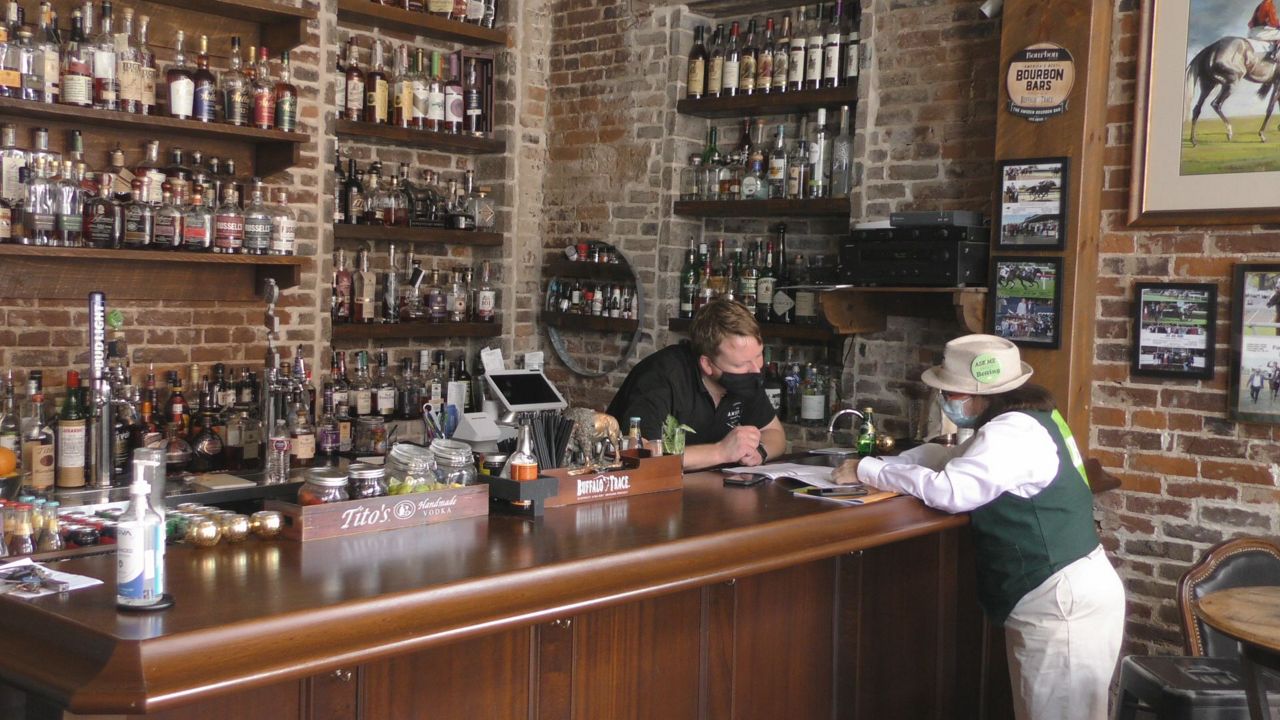LEXINGTON, Ky. — Kentucky accounts for 95 percent of the world’s bourbon supply, and production of the distilled spirit has quadrupled since 1999 while sales hit an all-time high in 2019.
Even during the ongoing COVID-19 pandemic, the bourbon boom is showing no signs of slowing down.
What You Need To Know
- Consumption expected to increase for next three to five years
- More Blacks, Asians and women drinking bourbon
- Distillery tours, bourbon trail have increased popularity
- High-income households drinking more bourbon over past several years
“While notable troughs have followed previous peaks in 1999 and 1972, this time the landscape has changed,” Tim McKirdy wrote on vinepair.com. “During the 1970s, distillers sat on millions of barrels of inventory just as consumer preferences turned to lighter, un-aged spirits like tequila and vodka. In contrast, bourbon’s recent growth has come during a time of unprecedented competition – whether from other whiskey subcategories such as rye or other distilled spirits gin.”
McKirdy said sales are predicted to grow for at least the next three to five years at a rate of at least 5 percent partly as a result of bourbon building a strong customer base over the past two decades. Also contributing to the record $1.78 billion in sales in 2019, a 12.9 percent increase from 2018, was the introduction of small-batch and single-barrel brands that contributed to bourbon’s reputation as a high-quality spirit, according to Kentucky Distillers Association (KDA) President Eric Gregory.
Another factor, Gregory said, is bourbon becoming more readily available worldwide.
“Once we signed the NAFTA agreement and the EU agreement, and finally got on a level playing field with Scotch whisky and other global whiskeys, we started sending more overseas,” Gregory told McKirdy.
Bourbon represents 8.7 percent of the total spirits volume in the U.S., according to the International Wine and Spirits Record (IWSR), a global data frim. Over the past five years, IWSR reports a compound annual growth rate of 7.9 percent for volume sales and 11.4 percent for dollar sales, according to vinepair.com.
Nielsen data shows that off-premise dollar sales grew 12.9 percent in 2019, reaching a total of $1.78 billion. Bourbon was the third fastest-growing spirit in 2019 behind tequila and rye whiskey. Vodka and blended whiskey recorded greater off-premise dollar sales totals than bourbon in 2019, according to the article.
Bourbon tourism is another factor contributing to the spirit’s growth. The KDA started the Kentucky Bourbon Trail in 1999 with 10 distilleries located within 20 minutes of one another. The Trail now has 38 distilleries across Kentucky and has added a Kentucky Bourbon Trail Craft Tour that brought 1.4 million tourists to the state in 2018.
“People, especially younger drinkers, crave authenticity,” Gregory told McKirdy. “We’ve grown a whole legion of bourbon ambassadors [because of] our Kentucky Bourbon Trail distillery visits.”
The demographic of bourbon drinkers has also started to evolve, according to McKirdy’s article. While there are significantly more male than female bourbon drinkers, women are drinking it more.
While white males make up 78 percent of bourbon drinkers, consumer insights firm MRI-Simmons reports an increase of Black and Asian bourbon drinkers. There has also been an increase in bourbon consumption among wealthier drinkers, increasing 46 percent in households with an income between $150,000-$200,000 and 78 percent in households in the $250,000-$500,000 income range.
Peggy Noe Stevens, a lifestyle consultant from Louisville, became the world’s first female master bourbon taster in the late 1990s. She was the only such female for several years, and although she remains in an exclusive group, things are starting to change.
“I have seen a major shift in women becoming master bourbon tasters and just being involved in the industry in general over the past five or six years,” she said. “Women are making progress with anything bourbon-related now.”
